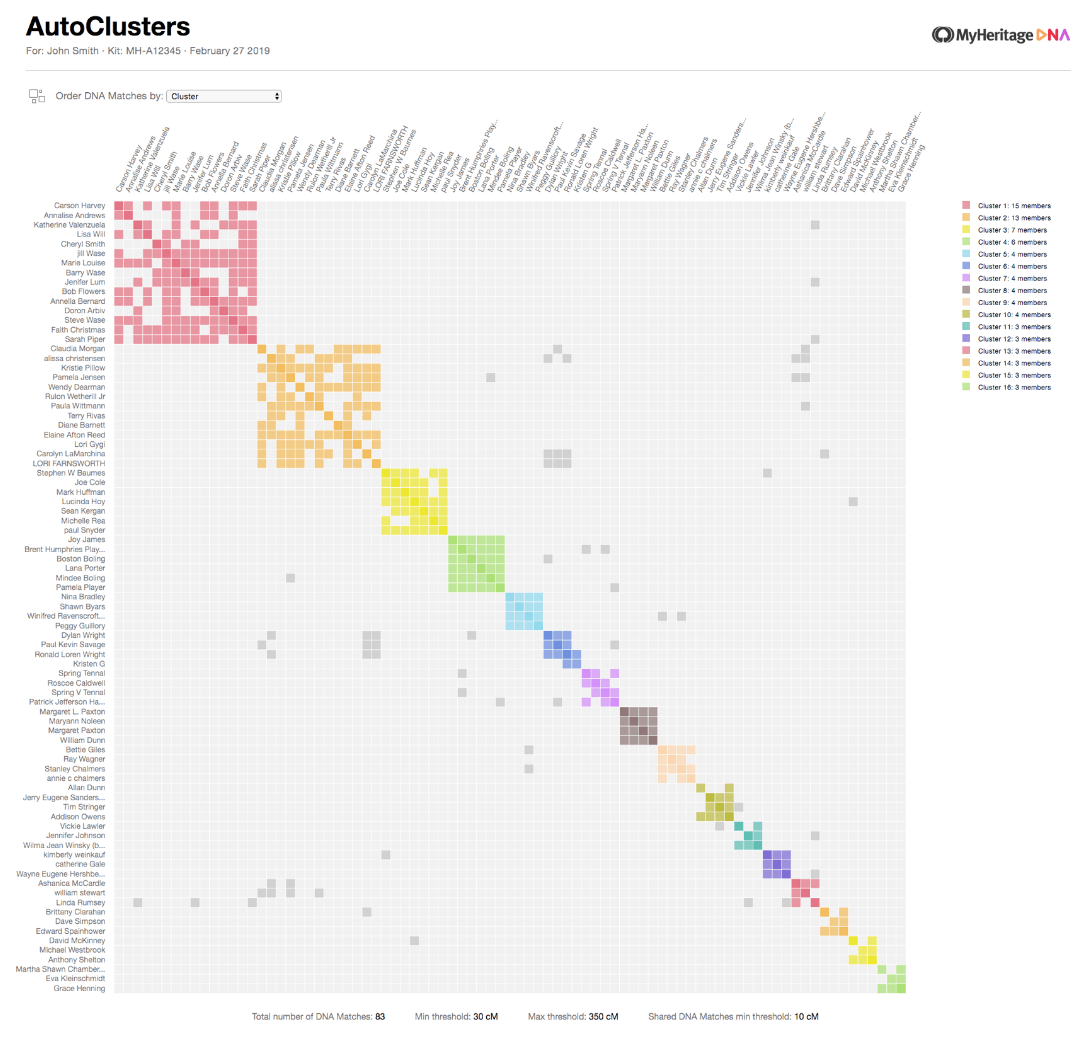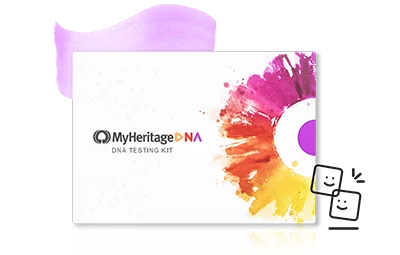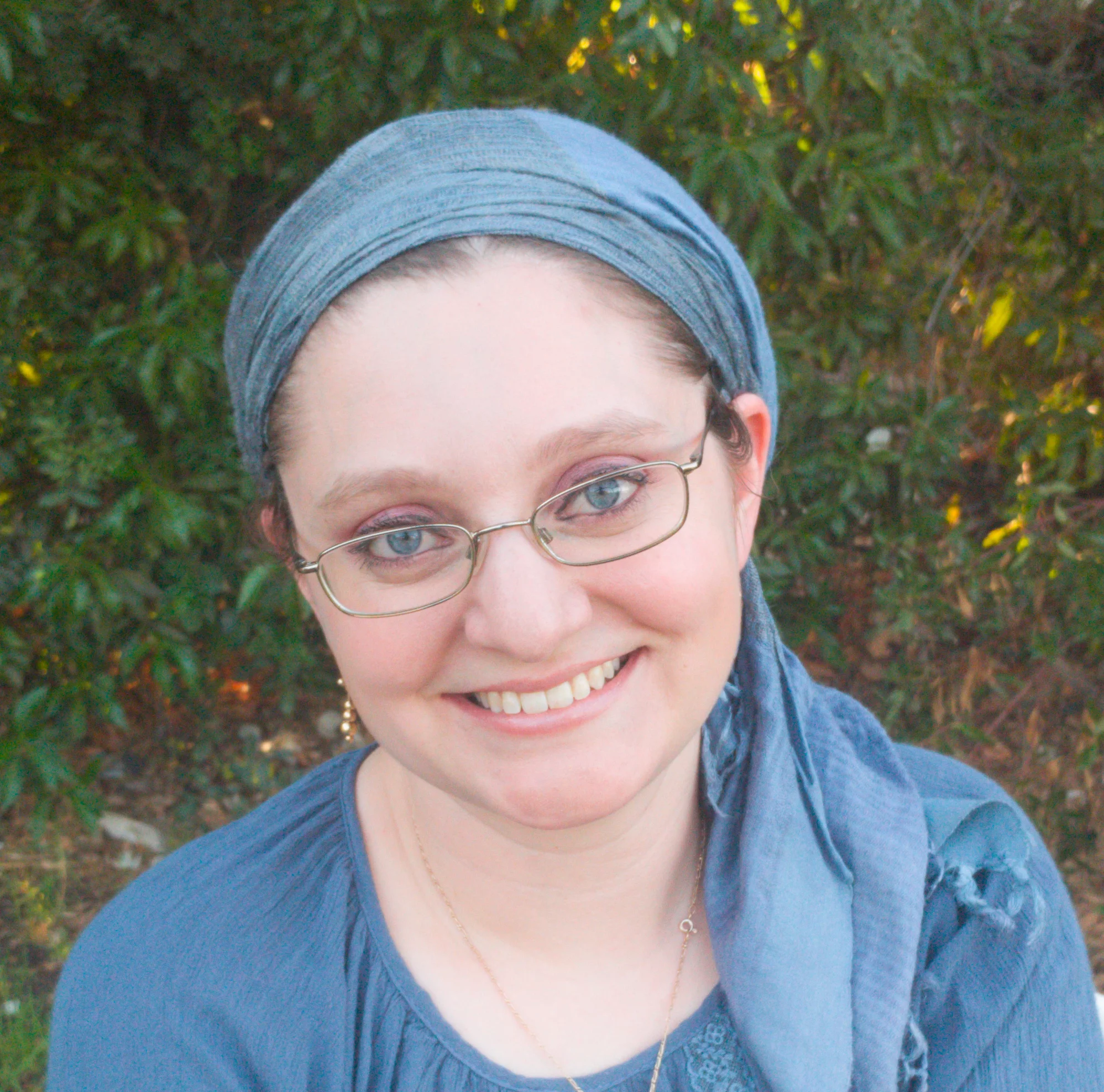
So you tested with MyHeritage DNA, or maybe you uploaded your results over from another company. Awesome!
But now you’re staring at your match list wondering what on earth you’re looking at. Why does nothing seem to make sense? Or maybe you dove in headfirst and made a glorious mess of things. Don’t worry — you’re not alone.
MyHeritage has some incredibly powerful DNA tools — Chromosome Browser, AutoClusters, Theories of Family Relativity™ — but most people never look past the ethnicity results. And even those who do? They’re often making critical mistakes that lead to junk matches, false trees, and a whole lot of wasted time.
Let’s talk about the biggest DNA mistakes people make on MyHeritage — and exactly how to avoid them. Whether you’ve tested, transferred, or are just considering it, this post might save you hours of frustration and confusion.
1. Blindly trusting DNA matches
Here’s the first trap: assuming every DNA match is gold. You get this list of genetic cousins, and it feels like you’ve just unlocked the key to your past. But not so fast.
MyHeritage uses a technique called imputation to standardize results between companies. It’s helpful — but it also opens the door for false matches. Some studies suggest that up to a third of small matches might be pure noise.
Have you ever gone down a rabbit hole chasing a 10 cM match who turned out to be a cosmic accident? Yeah. Me too. Segments under 15 cM are way more likely to be coincidences than actual family. Let’s normalize ignoring those tiny matches.
What to do instead: Focus on matches sharing 20 centimorgans or more. If all your matches are below 20 centimorgans, you may need to wait a few months or years until closer relatives have taken a DNA test.
2. Not testing the DNA of known relatives
This one’s hiding in plain sight — and it’s a game-changer. If you haven’t tested or uploaded DNA from your known relatives (parents, aunts, uncles, cousins), you’re missing out on data that could make your entire match list click into place.
Every generation closer to a shared ancestor makes the DNA picture clearer. A match that shares 75 cM with you might share 180 cM with your mom — and suddenly, the mystery of your relationship to that cousin has solved itself.
Plus, testing relatives helps confirm (or debunk) questionable matches. If a segment doesn’t show up in your tested parent, it’s probably fluff.
And good news: if your relatives tested on other platforms, MyHeritage accepts uploads. Even just one more known relative on your match list boosts your AutoClusters configurations, improves Theories of Family Relativity™, and helps make sense of it all.
3. Misusing AutoClusters and Theories of Family Relativity™
These two features are the flashy power tools in your MyHeritage toolbox. But if you use them without understanding how they work, you might end up drilling into drywall.
Let’s break it down:
AutoClusters show how more distant matches group together — revealing potential shared surnames, ancestral homelands, and lineages. They don’t include close relatives (over ~350 cM), so those top matches should be solved separately first.

But beware: if your tree has endogamy or pedigree collapse (looking at you, Acadians, Ashkenazi Jews, Appalachian researchers…), your clusters might look like spaghetti. Don’t panic — just don’t take them literally. Use them to spot patterns, then verify with records and logic.
As for Theories of Family Relativity™, they pull from user trees and historical records. But remember: a theory is only as good as its data. If your match’s tree says Grandma married her brother and the records place her in a different state, you’re in fantasy land.
Fix it like this:
- Build out your biological tree on MyHeritage with solid sources.
- Vet every theory against original documents.
- Use AutoClusters to support, not invent, theories.
4. Ignoring the Chromosome Browser
This tool is MyHeritage’s secret weapon. Their biggest competitor doesn’t offer anything like it — and yet most people have no idea how powerful it is.
If you’re only using ethnicity and match lists, you’re skipping the genetic proof that confirms or crushes your theories. The Chromosome Browser shows exactly where you match someone — down to the segment.
Here’s why that matters: the placement of the DNA you share with your match can be the difference between meaningless noise and actually useful information. A long, clean segment on a single chromosome? That’s your gold. When multiple people from the same branch match you on that segment, that’s triangulation. That’s evidence that all these people are related.
If you’re serious about using DNA for genealogy, the Chromosome Browser isn’t optional, it’s essential.
5. Using the Chromosome Browser… incorrectly
Okay, so you’ve found the Chromosome Browser. But if you’re just admiring the pretty bars without checking if your other matches overlap in the same segment, we need to talk.
Just because there are bars stacked on top of each other doesn’t mean it’s triangulation. That DNA might come from totally different ancestors — or be a coincidence. (Thanks again, endogamy.) You don’t just need two people who match you: you need two people who match you on the same segment. Look for segments that are highlighted like this:

MyHeritage highlights segments down to 2 cM. Prioritize matches with longer shared segments, and look for boxes that group segments together. That’s how you know you’ve got something real.
6. Failing to take notes
You find a promising match. You poke around their tree. You feel a spark of excitement… and a week later, you’ve completely forgotten everything.
You didn’t label the match. You didn’t write a note. You didn’t sort it into a group. So now you’re trying to retrace your steps and wasting time repeating the whole process to relearn what you learned the week before.
MyHeritage gives you tools to stay organized: labels, notes, and so much more. Use them!
7. Trusting messy family trees
Let’s be honest — some trees on MyHeritage are wild. Wrong names, incorrect dates, and somehow, a guy born in 1802 has a Facebook page.
Just because you receive a Smart Match™ or a Theory of Family Relativity™ doesn’t mean you should accept it as gospel. Trees are user-submitted, and some cousins… shouldn’t be trusted with genealogy software.
What to do:
- Review their tree carefully.
- Cross-check locations, dates, and relationships against records.
- Build your own source-based tree on MyHeritage (not just a copy/paste from another place).
The more accurate your tree, the better your matches and theories will be.
8. Using only one DNA platform
Last but definitely not least: thinking one platform can give you all the answers.
I get it. You test on MyHeritage, your match list pops up, and off you go. But if you’re not cross-referencing matches across other platforms, you’re solving a puzzle with missing pieces.
Your DNA Match list on MyHeritage reflects only the people who’ve tested with MyHeritage and/or opted into matching. That means plenty of valid connections — including close ones — might be missing in action. They could have tested elsewhere, or not at all.
The fix: Remember that DNA is only one piece of the family history puzzle — and your current match list is just a snapshot in time. The more relatives who test and participate in family research, the more complete the picture becomes.
If you know someone who’s already tested with a different service, encourage them to explore their DNA with you. When more relatives are part of the process, you get stronger clusters, better matches, and more accurate conclusions.
Your DNA research will always be evolving. Stay flexible, stay collaborative, and don’t stop at what’s already in front of you.
Final thoughts: Build smart, not fast
So there you have it — the sneakiest, time-wasting, tree-wrecking mistakes people make with MyHeritage DNA… and how to dodge them.
If you’ve made any of these? Welcome to the club. Seriously. Nobody starts as an expert.
But the faster you stop trusting junk matches, skipping segment data, and treating theories like facts, the faster you’ll start building a family tree that’s actually accurate.
You’ve already made it this far — which tells me you’re serious about doing this right. Keep going. And keep your notes, matches, and mind clear — your future discoveries will thank you.
This article was adapted from Devon Noel Lee’s YouTube video “The Biggest Mistakes People Make with MyHeritage DNA (And How to Avoid Them)”. Watch the full video below:




